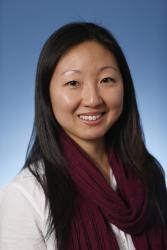This is the first piece in a new blog series on learning progressions.
Education policymakers around the world are recognizing that students need a broad range of skills such as communication, collaboration, and problem solving in order to thrive in the future. However, what this means in practice is not clear. Revising curricula to include these skills does not address lack of understanding of the nature of the skills or how to teach the skills.
A first step is to understand how these transferable skills develop. The concept of learning progressions addresses this step. Learning progressions describe how the skills might be demonstrated, both in their early forms and in increasingly advanced forms. It is critical for teachers to be able to identify the behaviors that relate to these skills if they are to intervene at the appropriate levels of challenge.
This means that teachers need to have access to descriptions of how skills progress over time so that they can design classroom tasks that are within the zone of proximal development for their students. In this way, teachers can scaffold the learning of their students.
How can learning progressions support teaching and learning of 21st century skills?
“By its very nature, learning involves progression,” stated Margaret Heritage in a 2008 paper written for the Council of Chief State School Officers (CCSSO). Much learning tends to follow an expected path—or progression—where more complex skills are built on foundational skills. For example, gross motor development in the early years tends to follow a typical trajectory. First, children learn to sit on their own, then crawl, then stand, then take some steps before taking off and running. Not all children will do this of course—some may go from sitting to standing without crawling in between! Also, not all learning develops in a nice predictable linear pathway—sometimes a separate, but inter-related area of learning needs to act as a trigger for us in our current learning. Notwithstanding, in many areas of learning, such as science, we have been able to use knowledge of learning paths in traditional academic learning to structure curricula.
And here is the rub. We don’t know a great deal about the “typical” development of many of these 21st century skills in which society is currently interested. Much less is known about how 21st century skills progress from basic forms to complex forms than we know about literacy or numeracy. Therefore, we don’t currently have the roadmaps for guiding teachers in what might be expected of students at different levels of skill, and how they might move students from one level to the next.
Although we develop many transferable skills naturally as we mature, the views of global organizations and employer groups are that many of our school graduates have not developed these sufficiently to contribute in a changing and dynamic world. Education systems now need to deliberately design a new teaching approach to ensure that not only the skills are modeled in the classroom, but that there is also an opportunity to provide more explicit teaching of these. We need to move beyond stating, “We want students to be good collaborators or good problem solvers” to asking, “What do we mean when we say collaboration or problem solving? What does that look like? How should we expect students to develop and change over time?”
But what are learning progressions?
It is important to understand what learning progressions are, how they help us, and how they are developed.
Learning progressions are sometimes referred to as learning continua or developmental progressions. Although standards and curricula are often prioritized in educational documentation, it is the progress toward the standards and meeting curricular goals that is important. This “progress” can be seen as a roadmap which supports instructional planning. Because curricula are typically written in discrete topics and for discrete year levels, it can provide the illusion that these comprise very separate sets of knowledge or skills. In fact, these topics need to be linked, with broad connections. Heritage refers to “sequence”, “continuity”, and “coherence” as implicit in the notion of learning progression. It is not sufficient for a teacher to know only the curriculum being taught in her grade—she must understand what the students learned before, and what they will need to engage with after—in order to ensure deep learning. Learning progressions can describe the sequence of learning in a domain over many years for “big ideas”; or just a term’s work with a greater degree of specificity.
Progressions have been developed based on drawing data from multiple sources. A scientific approach would include developing a set of hypotheses about how an area of expertise develops, followed by collection of data to identify the degree of fit of evidence to the theory. In reality, many progressions have emerged from a more historical approach, due to common knowledge about learning sequences. With 21st century skills, we lack the latter and there are limited resources available for the former.
In this blog series, we will see some current examples of how learning progressions are being used from early childhood settings, to secondary education, and to global metrics. We need to apply some of the learnings from these applications to support our educators to address demands for change in education goals.
The Brookings Institution is committed to quality, independence, and impact.
We are supported by a diverse array of funders. In line with our values and policies, each Brookings publication represents the sole views of its author(s).









Commentary
Learning progressions: Pathways for 21st century teaching and learning
March 27, 2018